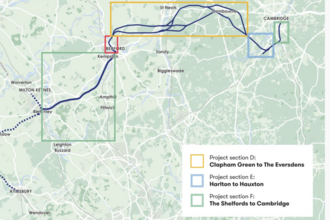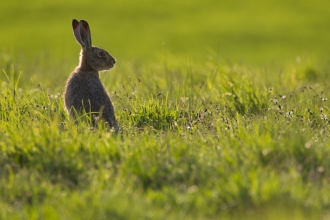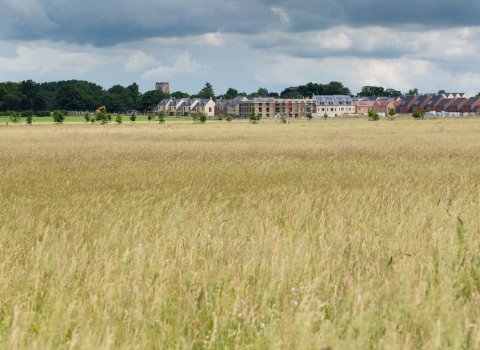The Oxford to Cambridge Arc has been around as a concept for decades – the idea that there is a belt of central England that has the potential to be an economic and / or technological driver for the UK. Recently it has gained more traction, with the suggestion that it could provide opportunities for major development, partly because London is seen to be struggling to absorb its growing housing needs. The National Infrastructure Commission (NIC) a government advisory body, suggested that house building could double, with a million extra homes built in the Arc counties (Bedfordshire, Buckinghamshire, Cambridgeshire and Peterborough, Northamptonshire and Oxfordshire) by 2050. The government has been working behind the scenes to look at whether they think the idea should be promoted.
The Wildlife Trust is not an anti-development organisation – we’re a pro-wildlife organisation. But clearly there are overlaps between the two issues.
Development in the wrong places is catastrophic for local wildlife, and cumulative development over decades has clearly contributed to declines in our wildlife. Arguably, there is less wildlife rich land in the Arc counties than there is elsewhere in England (4% designated as SSSI, for example, compared with the national average of 8%, and 12% for the whole UK), but that means the areas of wildlife rich habitat that do exist come under increasing recreational pressure.
However, development in the right places, and carried out in the right way, can bring wildlife benefits. With housing developments, greenspaces can be right where people need wildlife – on their doorstep.
Our own offices at Cambourne are in an area where housing growth has led to a clear increase in wildlife (although other aspects of Cambourne, such as the travel links are much less sustainable). That’s largely because the area Cambourne was built on had been intensively farmed and had very little wildlife of interest before the villages were constructed. And because a lot of effort went into, and still goes into, creating and maintaining wildlife habitats there.
The OxCam Arc proposals could provide a major threat to wildlife. They raise broader sustainability concerns too. The Cambridge end of the Arc is highly water stressed, with abstraction from aquifers already unsustainable, and even at the western end of the Arc there have long been proposals for new reservoirs to supply Oxford, Swindon and London.
What about the housing increases that are currently proposed?
If they are brought forward under the current planning system – with no overarching assessment of the sustainability of level, locations, and infrastructure requirements – they could be hugely damaging. But, development – crucially in the right places – can provide new habitats for wildlife.
The current local plans for the Arc counties already include plans for major growth, and at the moment those are coming forward without a clear vision for how developments can be truly sustainable, and crucially how they will link together.
Reviewing the development needs for the Arc counties could provide an opportunity to push development towards areas where it is more sustainable. But there needs to be a step change in the provision of green spaces – wildlife rich, and for people – if any development in the Arc counties is going to avoid slowly, and surely, adding to the pressure on existing wildlife sites.
Working with our colleagues in other conservation organisations we have drawn up principles under which we think any new development in the Arc, and arguably elsewhere, should be brought forward.
These principles do not endorse any growth unless it is properly scrutinised at the earliest stages of planning and shown to be sustainable.
The NIC’s push for a million new homes in the arc and the expressway proposals are unlikely to survive that scrutiny. The principles are an agreed approach that development must take if it is going to avoid adding to the pressure on our wildlife-rich countryside.
The Wildlife Trust will always object to development that is truly damaging to wildlife, but we will also work with those planning development to try and secure positive outcomes for wildlife wherever that is possible. Our vision for the Oxford to Cambridge Arc is that development should only go forward at a level and pace that doesn’t breach environmental limits.
We know that our wildlife rich spaces are already too few and too small to protect our biodiversity. The Lawton Review demonstrated this is true nationally, and wildlife habitats in the Arc are fewer, and under more pressure than anywhere else in the country.
Action to protect and buffer those sites needs to come before our greenspaces can absorb any more pressure.
Read the more about our position on the Oxford-Cambridge Arc and the Nature's Arc principles




